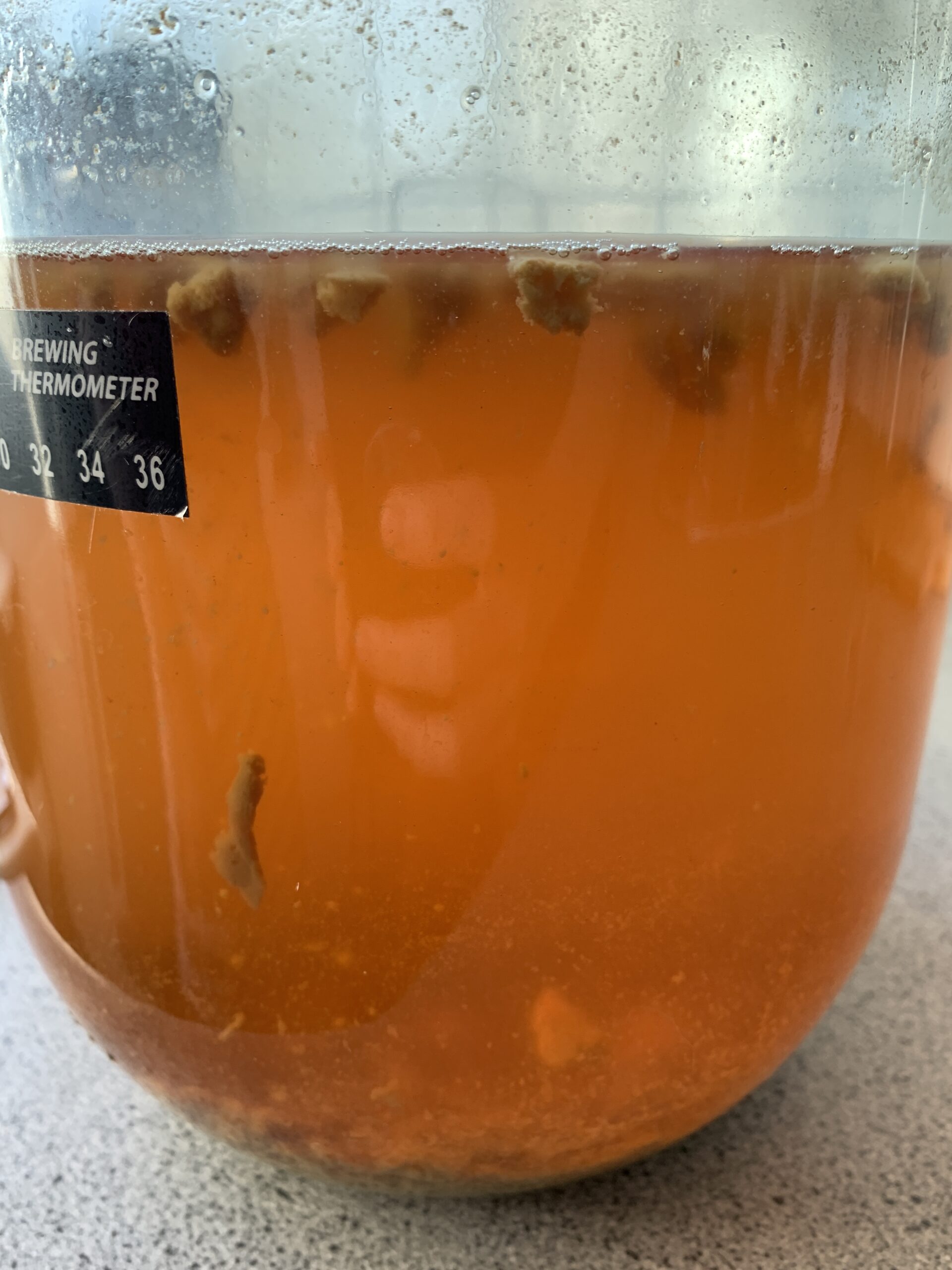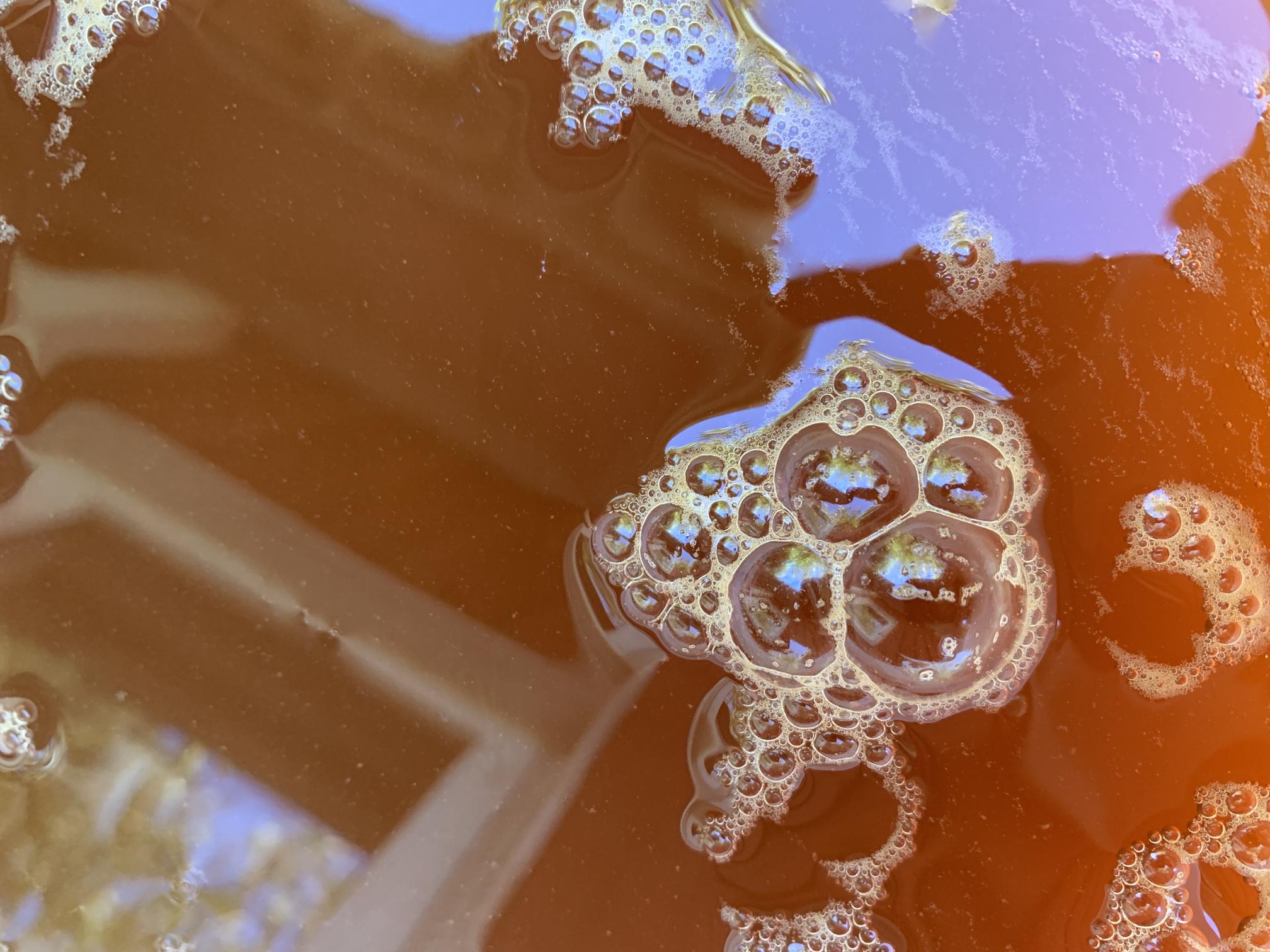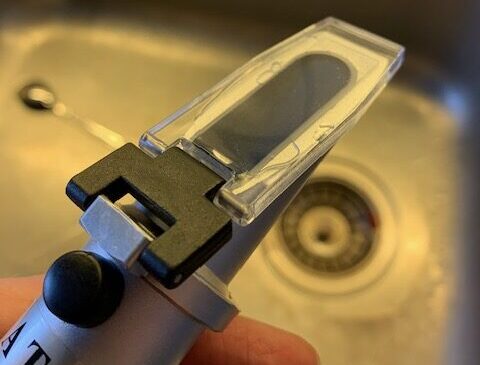As an experienced brewer, I have spent countless hours crafting different types of brews, from beer to wine, and of course, mead. Mead is one of the oldest known alcoholic beverages, created by fermenting honey with water, and occasionally adding fruits, spices, grains, or hops.
One question that often comes up from both beginner and intermediate brewers is: how long does mead take to clear?
Well, the answer isn’t so straightforward. It can take anywhere from a few weeks to several months, depending on a variety of factors such as the type of yeast and honey used, the temperature and even the water added.
In this post, we’ll dive deep into the process of making mead, exploring the factors that affect its clarity and how long it takes to clear.
The Basics of Mead Making
Mead making is a relatively straightforward process. It involves fermenting honey with water, usually with the addition of yeast.
The complexity of mead can be compared to that of wine, with intricate flavors that can be influenced by the type of honey used, the fermentation process, and the aging process.
How long it takes to clear depends on several factors, including the type of honey used, the yeast strain, the fermentation process, the aging process, and the clarifying process.
What Affects the Clarity of Mead?
Several factors can affect the clarity of your mead. These include the type of honey used, the yeast strain, the fermentation process, the aging process, and the clarifying process.

The type of honey you use can greatly influence the clarity of your mead. Darker honeys tend to produce cloudier meads, while lighter honeys can result in clearer meads.
The yeast strain you use can also affect the clarity of your mead. Some yeast strains are known to produce clearer meads than others. For example, wine yeasts tend to produce clearer meads than beer yeasts.
Flocculation refers to the phenomenon where individual yeast cells adhere together to form clumps or flocs. This property is particularly important for the speed with which mead will clear on its own as it allows the yeast to drop to the bottom of the fermenter.

The fermentation process can also influence the clarity of your mead. A faster fermentation can result in a cloudier mead, while a slower fermentation can produce a clearer mead.
The aging process is another factor that can affect the clarity of your mead. As mead ages, it naturally clears. This process can take anywhere from a few weeks to several months.
Finally, the clarifying process can also influence the clarity of your mead. There are several methods you can use to clear your mead, including cold crashing, fining, and filtration.
The Fermentation Process
The fermentation process is one of the most crucial stages of mead making. It’s during this stage that the sugars in the honey are converted into alcohol by the yeast.
The fermentation process can greatly affect the clarity of your mead. A rapid fermentation can result in a cloudier mead, while a slower fermentation can produce a clearer mead.
The Aging Process
The aging process is another key stage of mead making. As mead ages, it naturally clears. This process can take anywhere from a few weeks to several months.
The longer you age your mead, the clearer it will become. However, it’s important to strike a balance between aging your mead for clarity and aging it for flavor.
Actively Clarifying Your Mead
Once your mead has finished fermenting and aging, it’s time to clarify it. There are several methods you can use to clear your mead, including cold crashing, fining, and filtration.
Cold crashing involves chilling your mead to encourage the yeast and other particles to settle at the bottom of the fermenter. This process can take anywhere from a few days to a week.
Fining involves adding a substance to your mead to bind with the yeast and other particles, causing them to settle at the bottom of the fermenter. This process can take anywhere from a few days to a week.
Sure! Let’s delve deeper into each method and introduce a few other methods as well.
1. Cold Crashing
How it works:
Cold crashing works by dramatically reducing the temperature of your mead. This causes the yeast and other particles to become dormant and settle at the bottom.
Procedure:
- Move your fermenter to a cold environment, such as a refrigerator or a cool basement.
- Maintain a temperature between 32°F to 40°F (0°C to 4°C).
- Leave the mead undisturbed for several days.
- Once clarified, rack the mead into a clean container, leaving the sediment behind.
2. Fining
How it works:
Fining agents react with the suspended particles in your mead, making them heavier and allowing them to drop to the bottom.
Procedure:
- Choose a fining agent. Common agents include bentonite, isinglass, gelatin, and Sparkolloid.
- Dissolve or mix the fining agent in a small amount of water or mead, as per the product’s instructions.
- Add this mixture to your mead and stir gently.
- Allow the mead to settle for a few days to a week.
- Rack off the clear mead, leaving the sediment behind.
3. Filtration
How it works:
Using a filtering system, the mead is forced through filters that trap and remove suspended particles.
Procedure:
- Choose a filtration system. There are various options available ranging from hand-pump systems to electric ones.
- Pass your mead through the filter. This might require multiple passes for optimum clarity.
- Make sure to sanitize the filter and system before use to avoid contamination.
4. Time and Patience
How it works:
Given enough time, most meads will naturally clarify as the particles settle out.
Procedure:
- Place your fermenter in a stable, undisturbed location.
- Wait several weeks to months. Over time, you’ll notice the mead becoming clearer.
- Once clear, rack the mead to separate it from the sediment.
5. Egg Whites
How it works:
Historically, egg whites have been used as a fining agent. They work by attracting and binding with tannins and other particles.
Procedure:
- Whisk the white of one egg with a little bit of salt.
- Add this to your mead and mix gently.
- Allow the mead to settle for a week.
- Rack off the clear mead, leaving any sediment and the egg white behind.
Remember that each mead can react differently to clarification methods. It’s beneficial to keep notes on your processes and results, refining your methods with each batch to achieve the clarity you desire.
Conclusion
In conclusion, the time it takes for mead to clear can vary greatly, depending on a variety of factors. These include the type of honey used, the yeast strain, the fermentation process, the aging process, and the clarifying process.
Filtration involves passing your mead through a filter to remove yeast and other particles. This process can take just a few hours.
Here are 10 key points to remember about the process:
1. Mead is a type of alcoholic beverage made by fermenting honey with water.
2. The clarity of mead can be influenced by the type of honey used, the yeast strain, the fermentation process, the aging process, and the clarifying process.
3. Darker honeys tend to produce cloudier meads, while lighter honeys can result in clearer meads.
4. Some yeast strains, such as wine yeasts, can produce clearer meads than others.
5. A rapid fermentation can result in a cloudier mead, while a slower fermentation can produce a clearer mead.
6. As mead ages, it naturally clears. This process can take anywhere from a few weeks to several months.
7. The longer you age your mead, the clearer it will become.
8. There are several methods you can use to clear your mead, including cold crashing, fining, and filtration.
9. Cold crashing and fining can take anywhere from a few days to a week, while filtration can take just a few hours.
10. The time it takes for mead to clear can vary greatly, depending on a variety of factors.
In my personal experience as a brewer, patience is key when it comes to making mead. The process may take time, but the end result is well worth the wait.
FAQs
Why is my mead still cloudy?
Your mead might still be cloudy due to the presence of suspended particles or impurities that haven’t settled yet. This can happen if the mead hasn’t had enough time to clarify or if certain ingredients were used that contribute to cloudiness.
Why isn’t my mead clear?
There are a few reasons why your mead may not be clear yet. It could be due to suspended particles, such as yeast or other sediment, still present in the mead. Another possibility is that the mead may need more time to settle and clarify naturally. Additionally, certain factors like temperature, pH levels, or the type of honey used can affect the clarity of mead.
Why is my mead not clearing up?
There can be a few reasons why your mead is not clearing up. It could be due to insufficient time for the sediment to settle, high levels of suspended particles, or the presence of pectin or proteins that are causing cloudiness. Additionally, if the fermentation process is not complete or if there are residual sugars, it can hinder the clarity of the mead. Proper clarification methods such as fining agents or cold crashing might be necessary to help clear the mead.
How do you clear cloudy mead?
To clear cloudy mead, you can try a few methods. One option is to use fining agents like bentonite or gelatin, which help to bind and remove suspended particles. Another method is cold crashing, where you refrigerate the mead for a few days to encourage sediment to settle at the bottom. You can also try racking the mead, which involves transferring it to a new container, leaving behind any sediment. Finally, time itself can help as well, as the particles may settle naturally over time.
What happens if mead isn’t bubbling?
If your mead isn’t bubbling, it may indicate that the fermentation process is not active or has completed.
How do you clear up mead?
To clear up mead, you can use a process called fining. Fining involves adding substances like bentonite or gelatin to the mead, which help to clarify it by attracting and removing impurities. These substances bind with particles and sediments, causing them to settle at the bottom. After adding the fining agent, you let the mead sit undisturbed for a period of time, allowing the sediments to settle. Once settled, you can carefully siphon off the clear mead, leaving the sediment behind. This process helps to clarify the mead and improve its appearance.




